In a bid to deliver the most desirable electric vehicles the world over, Mercedes-Benz has pulled out all stops in its mission to increase range and efficiency. The Vision EQXX is the latest fruits of its labors, a sleek, four-door technological tour de force with 1,000-km range. Mercedes slashes weight, slices drag, and adds efficiency-boosting technologies at every corner and crevice.
An exploratory concept car isn't going to be the "Tesla killer" that's eluded Big Auto for years. But Mercedes already offers one of the most impressive Tesla alternatives in the EQS, a flagship e-sedan that's more luxurious than a Model S and, according to Edmunds testing, at least, is also a real-world range leader, boasting a 422-mile (679-km) test result. The Vision EQXX project is a natural progression, building on the EQS' successes to create a truly road-trip-worthy next-gen electric sedan dripping in technology.
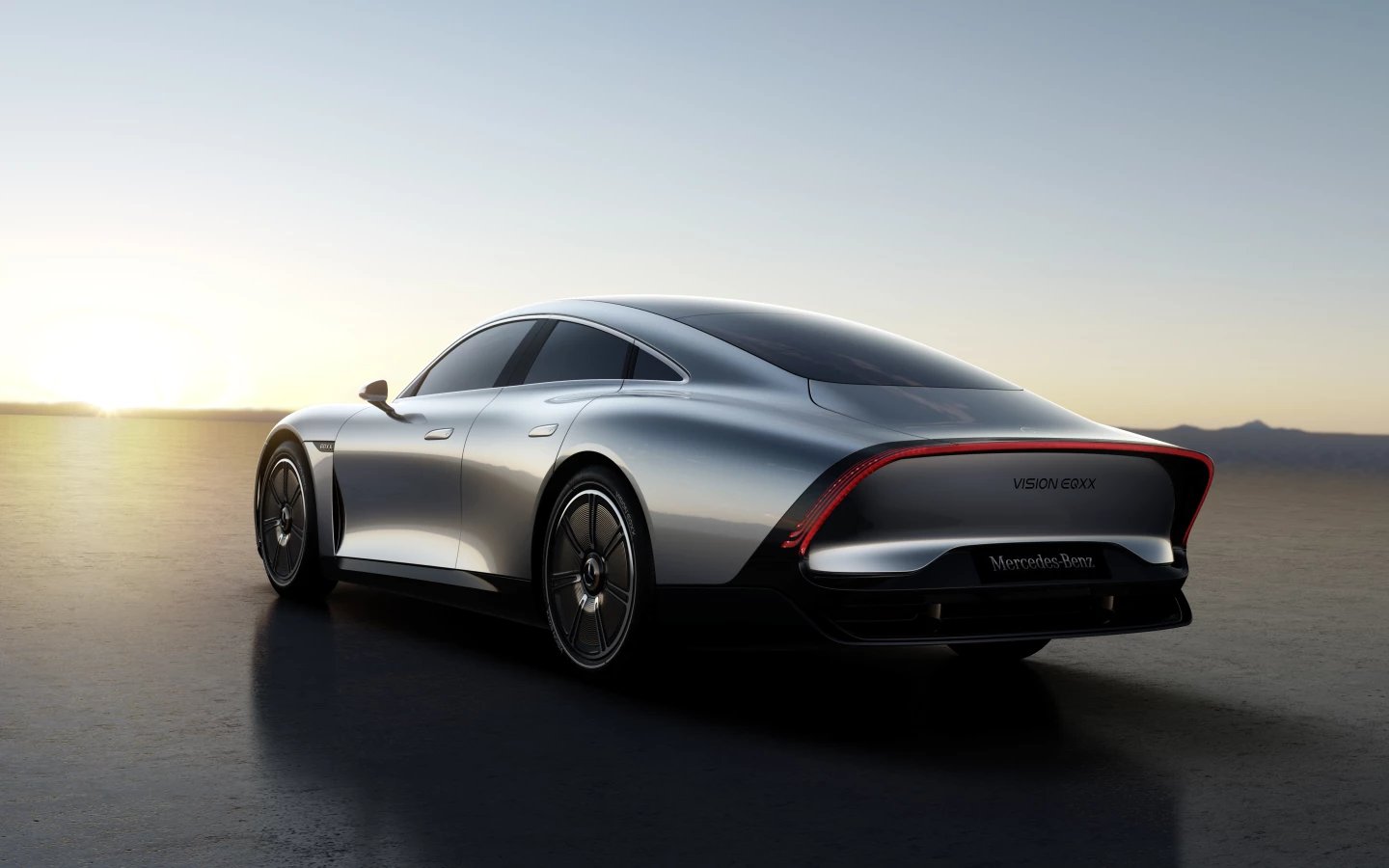
"The Mercedes-Benz Vision EQXX is how we imagine the future of electric cars," Ola Källenius, Chairman of the Board of Management of Daimler AG and Mercedes-Benz AG, said in introducing the forward-looking concept on Monday. "Just one and a half years ago, we started this project leading to the most efficient Mercedes-Benz ever built, with an outstanding energy consumption of less than 10 kWh per 100 kilometers. It has a range of more than 1,000 kilometers (620 miles) on a single charge using a battery that would fit even into a compact vehicle."
Mercedes put serious global intellectual capital to work on the Vision EQXX, relying on internal engineering and software development teams from all over the world, Formula 1 and Formula E programs, and external partners. The ambitious work started at the heart of the electric vehicle, where battery chemists informed by Formula 1 tech managed to pack nearly 100 kilowatt-hours of capacity into a pack with 50 percent less volume and 30 percent less weight than the 108-kWh pack that powers the EQS.
The battery design uses energy-dense high-silicon-content anodes and optimized cell packaging and components to cut fat. The weight-saving formula even includes components made from a carbon-fiber-reinforced sugar-cane-based composite. The battery accounts for roughly 1,091 lb (495 kg) of the Vision EQXX's 3,858-lb (1,750-kg) gross vehicle weight.
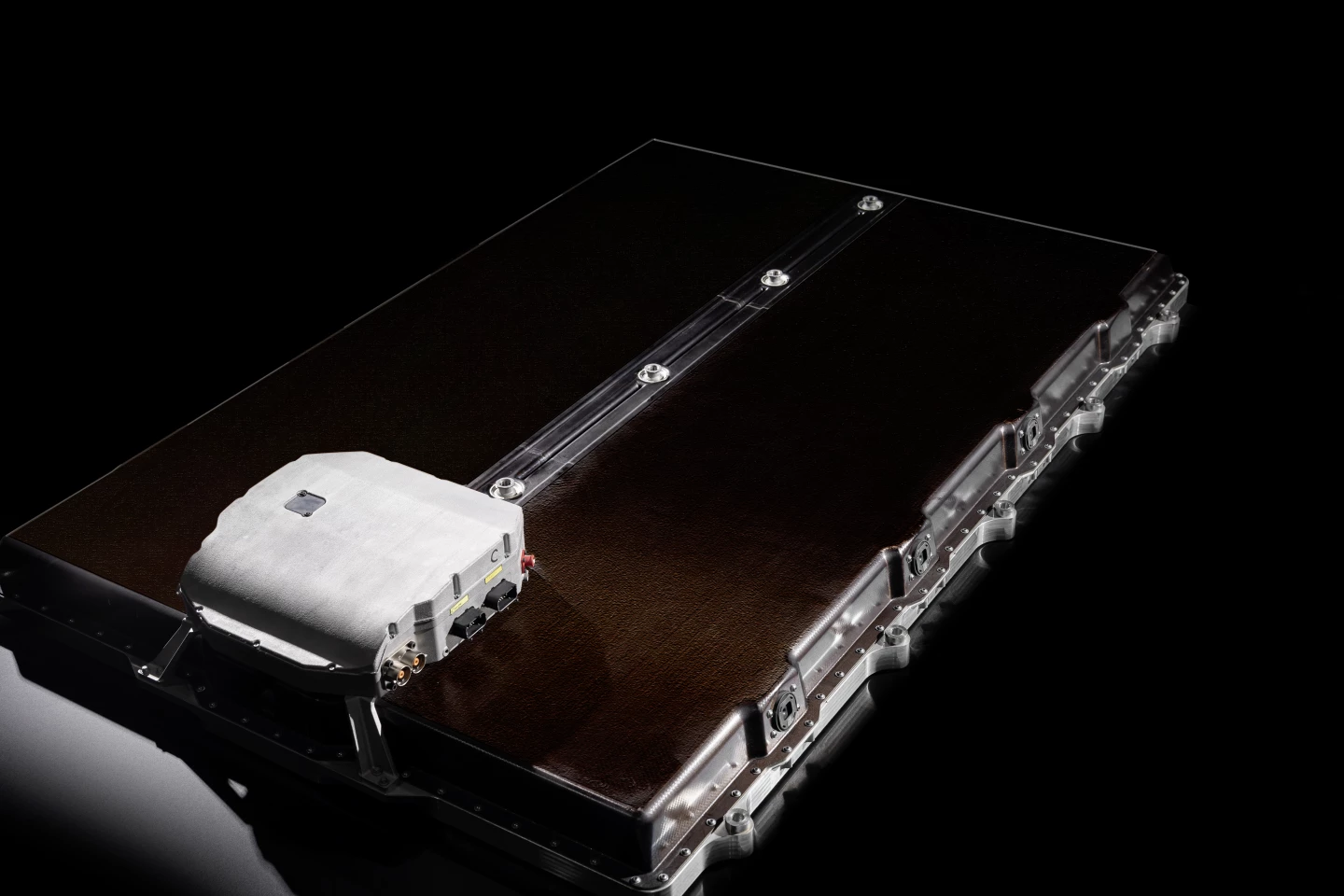
The Vision EQXX battery ultimately gets housed within a newly developed 201-hp 900-V electric drive said to deliver power to the wheels with 95 percent efficiency. Mercedes treads those 20-in covered forged-magnesium wheels with Bridgestone ultra-low-rolling-resistance tires to help ensure the power transfer to the road also happens as efficiently as possible.
The Vision EQXX body is just as impressive as the powertrain, combining weight-saving construction, a benchmark-busting 0.17 drag coefficient that's lower than past efficiency leaders like the Volkswagen XL1 and GM EV1, and a look that's clean and futuristic without pushing into outlandish or overdone. In addition to a compacted frontal area, offset front and rear tracks, and smooth "Sensual Purity" curves, the EQXX achieves its aerodynamic breakthroughs using active components, including a Concept IAA-derived retractable rear diffuser that extends at high speeds.
The front bumper cooling inlets and hood-mounted outlets are active, as well, closing to improve aerodynamic efficiency and opening when extra powertrain cooling is needed, such as in hot weather or during fast driving. Under normal conditions, the air flowing along the underbody suffices to chill the cooling plate that sits below the electric drive, keeping all components cool and operational.

The EQXX's smoothly arched roof serves as the home of 117 neatly integrated solar cells. Incorporated in partnership with the Fraunhofer Institute for Solar Energy Systems ISE, the solar cells add roughly 15 miles (25 km) of range over the course of a single day with ideal weather conditions. They don't charge the powertrain battery directly but instead route energy to a small auxiliary LiFePO4 battery responsible for running the climate control fan, infotainment system, lights and other secondary electrical equipment. Mercedes is also working on a solar charging system capable of feeding the primary high-voltage battery.
More weight-saving technology features below the Vision EQXX's shimmering "alubeam silver" skin, and Mercedes put a lot of engineering into one structural component in particular: the rear floor. Using the modeling tools of Hollywood and 3D gaming, it optimized the rear floor for supporting necessary loads without unnecessary material. The resulting one-piece aluminum casting has a web-like construction with deleted material eliminating unnecessary weight.
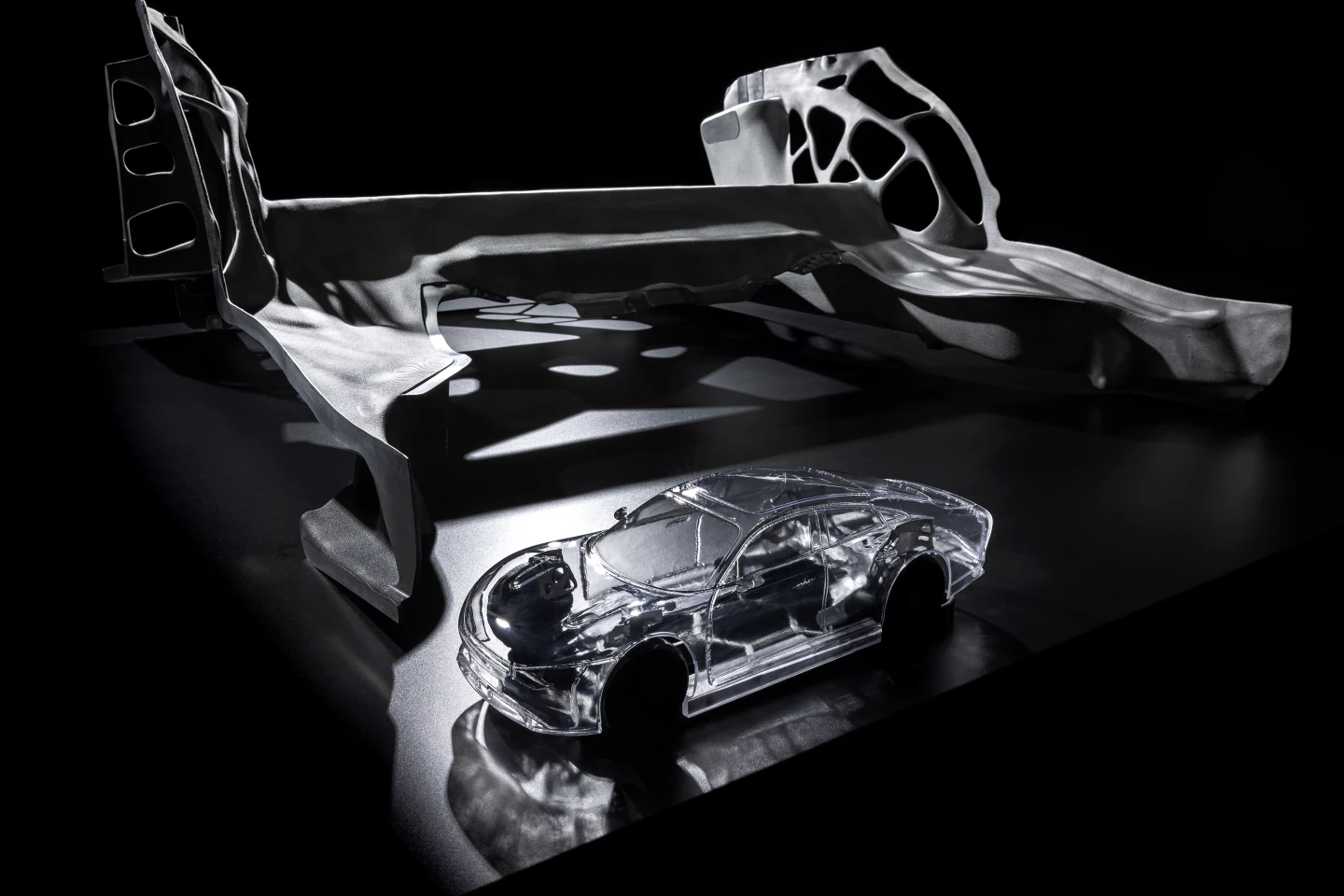
Since the rear floor also needs to keep dust and moisture out of the Vision EQXX interior, Mercedes partnered with Israeli startup UBQ Materials in sealing gaps with 3D-printed bio-plastic patches, which do the trick while cutting weight by between 15 and 20 percent versus a traditionally manufactured rear floor. The plastic in question is developed from landfill waste, removing 3 lb (1.4 kg) of waste for every 2 lb (0.9 kg) created, further enhancing the Vision EQXX's list of eco credits.
Bio-based, organically-inspired weight-cutting continues inside the carbon fiber/fiberglass doors, where Mercedes cuts out every last bit of animal-based material in favor of trendy eco-materials like mushroom leather, bamboo-fiber carpets, recycled-PET textile, vegan silk and cactus-fiber bio leather.
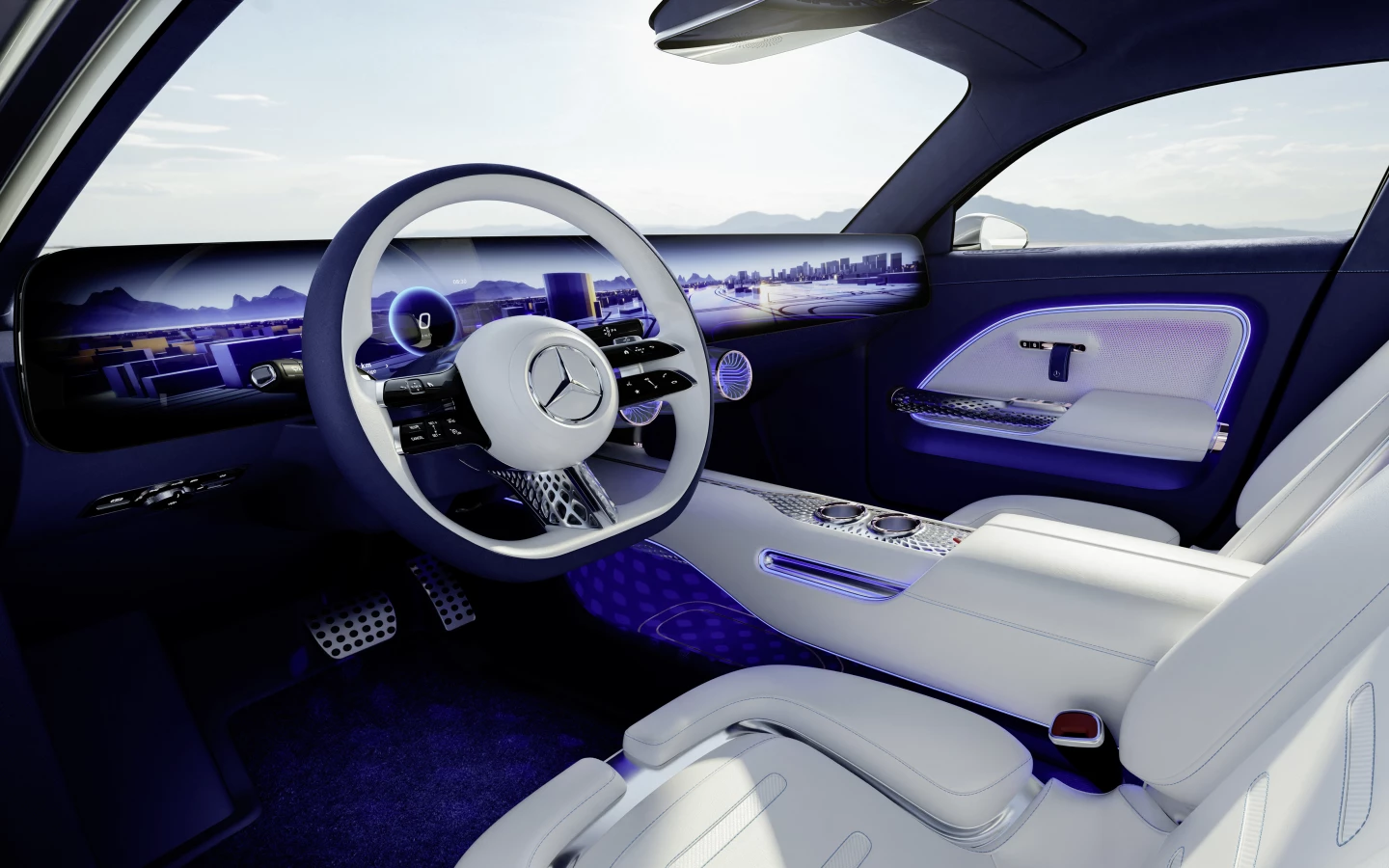
While intriguing on paper, the eco-friendly trims and upholstery take a visual back seat to the eye-grabbing centerpiece of the interior: the 8K infotainment display that stretches from pillar to pillar. At 47.5 inches, the new infotainment display is actually a little smaller than the 55-in Hyperscreen the EQS lugs around, and it features a simplified, decluttered layout that uses 3,000 mini-LED dimming zones to reduce energy consumption by lighting only areas necessary for displaying currently vital information. For instance, navigation software automatically zones out from high-detail 3D view to overview mapping when moving from city downtown to highway driving.
Beyond the navigation features, the infotainment system serves as an intelligent road trip assistant that offers tips on boosting real-time driving efficiency, tour-guide-style information, and even DJ-like music selection.
The Vision EQXX's 4D audio system reduces size and energy consumption through the use of headrest speakers and seat-integrated bass exciters. By placing the audio drivers closer to the passengers' ears, Mercedes is able to cut down the total number of speakers and the power needed to drive them. Beyond the usual multimedia audio, the sound system plays audio cues from the efficiency assistant and vehicular sounds and warnings.
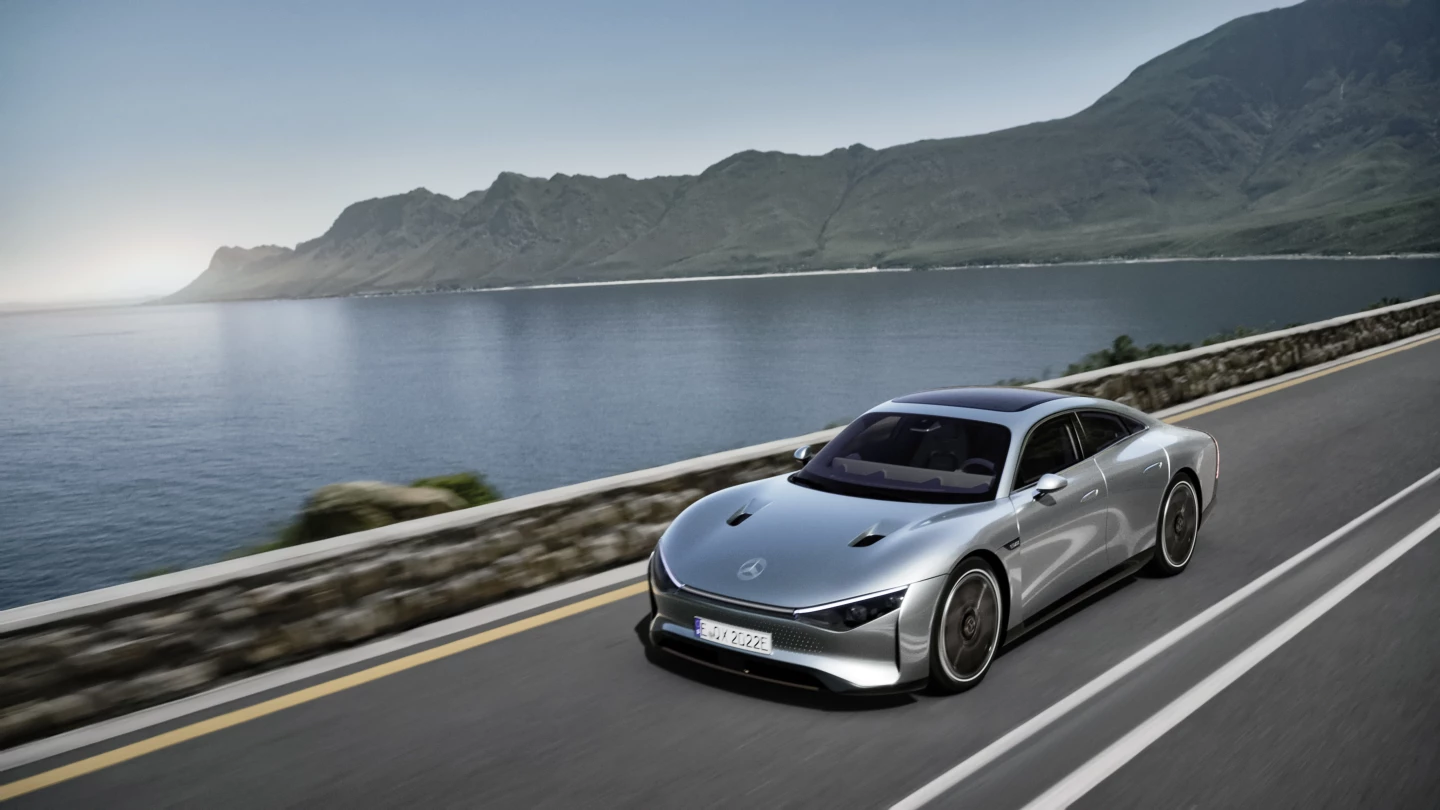
Using a highly software-dependent approach, Mercedes developed the Vision EQXX over the course of 18 months. The car is clearly much more of a futuristic concept than a production preview, but it does take an initial step toward the type of highly advanced, efficient and luxurious breed of electric grand tourer that Mercedes believes will be among its stable of the "world"s most desirable electric cars." Mercedes plans to integrate many of the concept's features and technologies into production and future car architectures.
Source: Mercedes-Benz






























